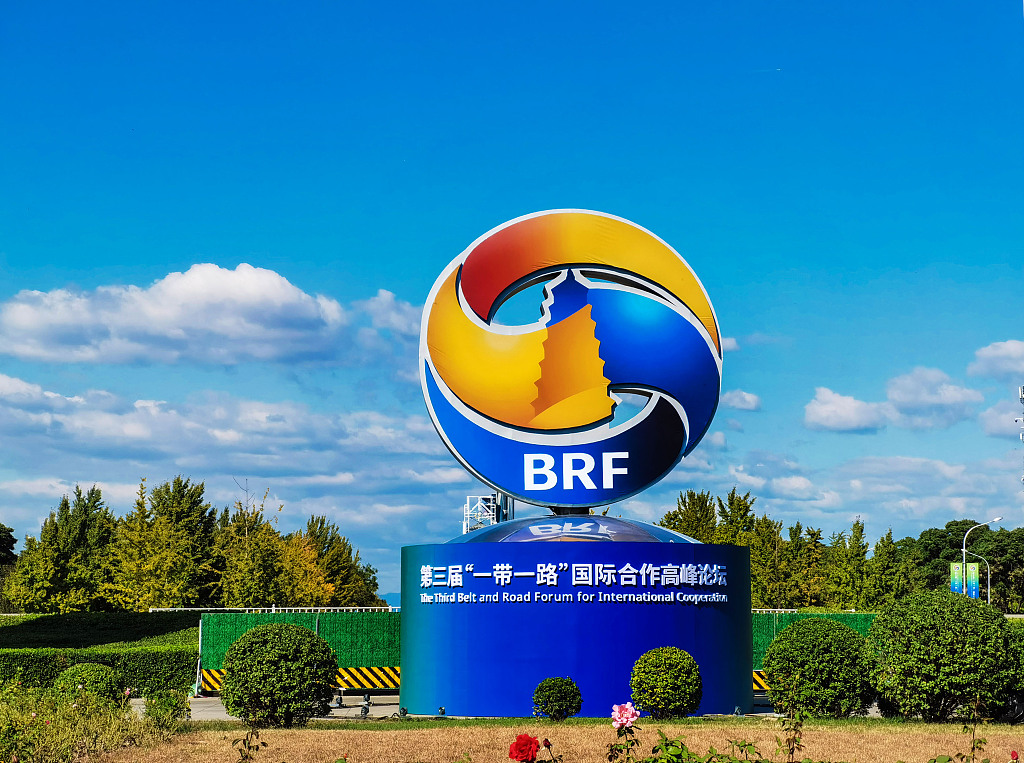By: Saher Liaqat
China has recently hosted the third edition of the Belt and Road Forum (BRF) in Beijing on October 17 and 18, marking the celebration of the 10th anniversary of the Belt and Road Initiative (BRI) with an overarching goal of establishing a new blueprint for high-quality Belt and Road cooperation, underlining innovation, openness, and sustainability for the betterment of China and the global community. After a pandemic-induced hiatus, the forum offered insights into global perceptions of the BRI and allowed China to clarify its vision for the initiative.
President Xi Jinping outlined the future direction of the BRI during the third BRF, highlighting eight key steps, including enhancing railway connections with Europe, establishing new pilot zones for commerce, promoting green development, fostering scientific and technological exchange, and strengthening integrity and compliance within the BRI.
Over the past decade, the BRI has undergone significant changes and adaptations in response to various challenges and criticisms. One long-standing criticism of the BRI has been its vagueness, with Chinese companies often branding various projects as part of the initiative. The public’s perception has been primarily tied to large infrastructure projects like roads, railways, and ports. In response to criticism regarding environmental concerns, economic coercion, and a lack of transparency, China is striving to reshape the BRI’s image to emphasize a commitment to “open, green, and clean cooperation.” The focus on promoting China’s agency is encapsulated in the mantra “planning together, building together, and benefiting together.”
Key developments have reshaped the BRI’s trajectory in recent years. One notable shift has been towards “small and beautiful” projects, emphasizing lower investment and higher yield. Additionally, the introduction of the Digital Silk Road, focusing on telecom and digital infrastructure, has become increasingly important, particularly as Chinese companies have faced restrictions in Western markets. The COVID-19 pandemic has also accelerated a shift towards a more cost-effective and technology-focused BRI.
Despite rebranding efforts, the BRI will not abandon its hard infrastructure projects, including roads, railways, and ports. Xi Jinping has pledged to accelerate high-quality development in areas like the China-Europe Railway Express and trans-Caspian international transportation. Additionally, China has allocated over $100 billion in new funding through its development banks. In addition to infrastructure, President Xi has committed to advancing trade cooperation along the BRI, including free trade agreements and opening up China’s markets to foreign investments in the manufacturing sector. Notably, there’s a rhetorical commitment to enhancing “integrity” in BRI projects to address issues like corruption and transparency.
China is also placing a strong emphasis on the “Digital Silk Road,” focusing on science, technology, innovation, and e-commerce. They’ve launched the “Artificial Intelligence (AI) Global Governance Initiative” to influence global regulations for AI. This initiative opposes the formation of exclusive groups to obstruct AI development, which aligns with China’s opposition to U.S. tech restrictions on its AI sector.
A key theme at the forum was the promotion of green development, with a high-level dialogue on greening the BRI. This commitment included encouraging cooperation on green energy and supporting renewable energy deployment. Additionally, a Green Investment and Finance Partnership and a pledge to train 10,000 students in green technologies were announced.
Despite criticisms, the BRI has yielded benefits for both China and its partner countries. Countries participating in the initiative have seen increased investment and trade with China, with trade reaching $19.1 trillion between 2013 and 2022 and total investment amounting to $380 billion. While some European countries have expressed skepticism and even planned to withdraw from the BRI, the initiative continues to enjoy strong support from leaders in the Global South. The third BRF witnessed significant participation from countries in this region, such as Sri Lanka, Indonesia, Thailand, Pakistan, Papua New Guinea, and Kenya.
African leaders attending the forum, despite the lower number of leaders present, sought further financing for essential infrastructure and industrialization projects, showing an eagerness to expand their economies. Surprisingly, discussions around debt distress were conspicuously absent from official communications.
In Latin America, Chile and Argentina were the prominent attendees, with calls for Chinese investment in various sectors, such as green hydrogen, 5G networks, and lithium. Argentina also increased its currency swap line with China. This region has seen increased BRI investments in 2023, bolstering confidence in its position within the initiative.
The forum also marked the inclusion of “blue cooperation,” focusing on ocean projects. The “Blue Cooperation Initiative” laid out principles for China’s collaboration on ocean-related projects with BRI nations, emphasizing the potential for economic development, ecological protection, and the blue economy vision. Various agreements were signed for ocean and Antarctic cooperation, extending partnerships with several countries.
In his concluding remarks, Xi Jinping outlined various initiatives, including enhanced market access and a novel global AI governance project. Notably, President Xi reaffirmed the Belt and Road Initiative’s role in driving large-scale debt-financed infrastructure, with substantial funding of 350 billion yuan (US$47.8 billion) allocated to key Chinese development banks, similar to the 2017 commitments. An additional 80 billion yuan (approximately $11 billion) was earmarked from the Silk Road Fund.
Conclusively, the Belt and Road Forum stands as a cornerstone of China’s strategic vision, with even the prospect of a dedicated secretariat on the horizon. Undeniably, China’s resolute dedication to the BRI endures, with an increasingly sharp focus on digital and technological dimensions. The future trajectory of the BRI unfolds as a tapestry of grand-scale endeavors linked with sustainable, eco-friendly projects, particularly emphasizing green and ocean cooperation. It remains to be seen how these announcements will be implemented and how they will impact BRI partner countries.
The writer is a Research Fellow at Hanns Seidel Foundation and has been associated with an Islamabad-based policy think tank, Institute of Strategic Studies Islamabad. She can be reached at saherliaqat2000@gmail.com

